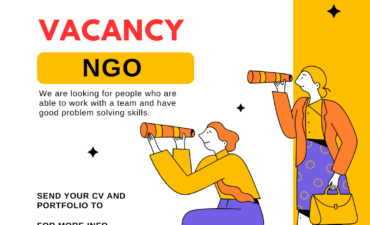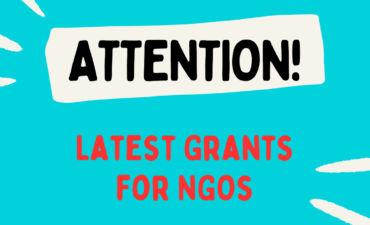Introduction: How to Create a Comprehensive Project Scope for NGOs, in the realm of Non-Governmental Organizations (NGOs), the meticulous definition of a project scope stands as a cornerstone for successful and impactful initiatives. The importance of a well-defined project scope cannot be overstated, serving as the compass that guides the entire project lifecycle. The delineation of clear project boundaries, objectives, and deliverables not only provides a roadmap for efficient project management but also acts as a catalyst for strategic decision-making.
Before we explore the landscape of Project Scope for NGOs,
Let us first Discuss, the importance of a well-defined project scope for NGOs (How to Create a Comprehensive Project Scope for NGOs)
NGOs, often navigating complex socio-economic and environmental landscapes, rely on a comprehensive project scope to set realistic expectations, allocate resources judiciously, and establish measurable outcomes. Beyond the internal benefits, a well-defined scope becomes a powerful communication tool, fostering transparency and understanding among stakeholders, donors, and the communities directly impacted by the NGO’s endeavors.
It serves as a mechanism for aligning the project’s trajectory with the overarching mission and values of the organization, ensuring that every action resonates with the ethical principles that underpin the NGO’s commitment to positive change. In essence, the importance of a well-defined project scope for NGOs lies not only in its role as a project management tool but also in its capacity to amplify the organization’s effectiveness, impact, and ability to navigate the dynamic landscapes in which it operates.
Overview of (How to Create a Comprehensive Project Scope for NGOs) guide’s purpose
The purpose of this guide is to equip Non-Governmental Organizations (NGOs) with a comprehensive and actionable resource for creating well-defined project scopes.
Recognizing the pivotal role that a clearly articulated project scope plays in the success of NGO initiatives, this guide offers a structured approach to guide organizations through the process.
The guide is designed to be a practical and accessible tool, providing step-by-step instructions and insights to streamline the creation of robust project scopes that align with organizational goals and values.
Significance of creating a comprehensive project scope (How to Create a Comprehensive Project Scope for NGOs)
The significance of creating a comprehensive project scope for Non-Governmental Organizations (NGOs) cannot be overstated, as it serves as the foundation upon which successful projects are built. The comprehensive nature of a well-defined project scope brings several key advantages:
- Clear Direction and Focus:
- A comprehensive project scope provides a clear roadmap, outlining the project’s objectives, deliverables, and boundaries. This clarity helps keep the project team focused on its goals and minimizes the risk of scope creep.
- Effective Resource Allocation:
- By clearly defining the project’s requirements and objectives, NGOs can allocate resources more effectively. This includes financial resources, human capital, and any other necessary assets, ensuring optimal utilization for maximum impact.
- Stakeholder Alignment:
- A detailed project scope facilitates stakeholder alignment by clearly communicating the project’s purpose, goals, and expected outcomes. This alignment is crucial for garnering support, understanding, and collaboration from various stakeholders, including team members, donors, and the communities served.
- Risk Mitigation:
- A comprehensive project scope allows for the identification and mitigation of potential risks early in the planning phase. By anticipating challenges related to scope, NGOs can develop proactive strategies to address issues, reducing the likelihood of disruptions during project implementation.
- Accurate Project Evaluation:
- A well-defined project scope establishes clear criteria for project success. This enables NGOs to accurately evaluate project performance against predetermined objectives, facilitating accountability and transparency in reporting to stakeholders and donors.
- Enhanced Communication:
- The creation of a comprehensive project scope enhances communication within the organization and with external parties. It ensures that everyone involved, from team members to donors, shares a common understanding of the project’s goals and parameters.
- Mission Alignment:
- A project scope aligned with the NGO’s mission and values reinforces the organization’s commitment to its overarching purpose. It ensures that each project contributes meaningfully to the larger mission, fostering a sense of purpose and cohesion within the organization.
- Efficient Decision-Making:
- With a detailed project scope in place, NGOs can make informed and efficient decisions throughout the project lifecycle. This includes decisions related to changes in project direction, resource reallocation, and adjustments to accommodate unforeseen challenges.
In summary, the significance of creating a comprehensive project scope lies in its ability to provide a solid foundation for successful project planning, execution, and evaluation. It is an essential tool that empowers NGOs to navigate complexities, allocate resources wisely, and deliver impactful outcomes aligned with their mission and values.
Understanding Project Scope (How to Create a Comprehensive Project Scope for NGOs)
It’s important to learn the Definition and Key Components of Project Scope so that a clear picture is mapped in your brain for compiling the Project Scope according to your won context.
The project scope is a detailed outline that defines the boundaries, objectives, deliverables, constraints, and criteria for success of a particular project. It serves as a foundational document that establishes what the project will accomplish and, equally important, what it will not. A well-defined project scope is crucial for guiding project planning, execution, and evaluation, providing a common understanding among stakeholders about the project’s purpose and parameters.
Key Components of Project Scope:
- Project Objectives:
- Clearly state the goals and objectives the project aims to achieve. Objectives should be specific, measurable, achievable, relevant, and time-bound (SMART).
- Deliverables:
- Enumerate the tangible outcomes or products that the project will produce. This provides a concrete understanding of what stakeholders can expect upon project completion.
- Project Boundaries:
- Define the limits of the project, specifying what is included and what is excluded. This helps prevent scope creep, ensuring that the project team remains focused on the defined goals.
- Constraints:
- Identify any limitations or restrictions that may impact the project, such as budgetary constraints, time constraints, or regulatory requirements. Recognizing constraints is essential for realistic planning.
- Assumptions:
- Clearly state any assumptions made during the project scope definition. Assumptions are conditions or factors believed to be true but not guaranteed, and understanding them is crucial for managing uncertainties.
- Stakeholders:
- Specify the individuals or groups who have an interest or influence in the project. Identifying stakeholders helps in understanding their expectations, needs, and potential impact on the project.
- Acceptance Criteria:
- Outline the criteria that must be met for the project to be considered successful and accepted by stakeholders. These criteria serve as measurable benchmarks for evaluating project outcomes.
- Project Timeline:
- Provide an overview of the project’s timeline, including key milestones and deadlines. A timeline helps in managing expectations and ensuring that the project stays on schedule.
- Resource Requirements:
- Detail the resources needed for project completion, including personnel, equipment, technology, and any other essential assets. This ensures that adequate resources are allocated to support project activities.
- Dependencies:
- Identify any external factors or dependencies that may impact the project. Understanding dependencies helps in anticipating and managing potential challenges.
- Exclusions:
- Clearly state any elements or activities that are explicitly excluded from the project scope. This helps in avoiding misunderstandings about what the project will not encompass.
- Change Control Procedures:
- Define the process for handling changes to the project scope. Establishing change control procedures helps in managing alterations while minimizing disruptions to the project.
By incorporating these key components into the project scope, NGOs can create a comprehensive and clear document that serves as a foundational guide for successful project management.
Number one mistake people make is they confuse between Project Scope and Objectives, you should learn to Differentiate between project scope and objective.
Project scope and objectives are distinct components of project planning, each serving a unique purpose in defining the parameters and goals of a project. Understanding the difference between them is crucial for effective project management.
Project Scope:
- Definition:
- The project scope outlines the overall boundaries, constraints, deliverables, and parameters of the project. It defines the “what” and “how much” of the project.
- Focus:
- It focuses on the entirety of the project, providing a comprehensive view of what is included and excluded from the project’s purview.
- Detail:
- Project scope is a detailed document that addresses the project’s boundaries, assumptions, constraints, stakeholders, timelines, and resources.
- Purpose:
- The primary purpose of the project scope is to provide a roadmap for project planning, execution, and evaluation. It sets the stage for understanding the overall project landscape.
- Example:
- For a construction project, the scope might define the specific buildings, structures, and features to be built, along with the materials to be used and the overall timeline.
Project Objectives:
- Definition:
- Project objectives articulate specific, measurable, achievable, relevant, and time-bound (SMART) goals that the project aims to accomplish. They define the “why” of the project.
- Focus:
- Objectives narrow down the project’s focus to key, strategic goals. They provide a clear direction for the project team and stakeholders.
- Detail:
- While objectives are specific and measurable, they may not delve into the detailed constraints, assumptions, or timelines. They are concise statements of desired outcomes.
- Purpose:
- The primary purpose of project objectives is to set clear targets for the project team. They help in guiding decision-making and prioritizing activities to achieve the project’s overarching goals.
- Example:
- In the context of an educational outreach program, a project objective might be to increase literacy rates among a specific demographic by a certain percentage within a defined timeframe.
Key Distinctions:
- Granularity: Project scope is detailed and encompasses the entire project landscape, while objectives are specific, focused, and highlight the key outcomes the project seeks to achieve.
- Orientation: Scope is more about defining the project’s parameters and context, while objectives are about setting measurable targets for success.
- Application: The project scope is foundational and guides the overall project, whereas objectives guide the day-to-day activities and decision-making within the project.
In summary, while project scope provides the comprehensive context for a project, objectives articulate the specific, measurable goals that the project aims to accomplish within that defined context. Both are essential components of effective project planning and execution.
Learn here, the impact of a clear project scope on overall project success (How to Create a Comprehensive Project Scope for NGOs)
The impact of a clear project scope on overall project success is significant. The project scope serves as the foundation for all project planning activities and sets the boundaries for what is included or excluded in the project. Here are some key ways in which a clear project scope contributes to project success:
- Alignment of Stakeholder Expectations:
- A well-defined project scope helps align the expectations of all stakeholders involved in the project. It ensures that everyone has a clear understanding of the project’s objectives, deliverables, and constraints.
- Effective Planning:
- With a clear scope, project managers can develop more accurate and realistic project plans. They can identify the necessary resources, estimate costs, and create a timeline for project completion. This contributes to better planning and resource allocation.
- Risk Management:
- A defined project scope facilitates better identification and management of risks. By understanding the project boundaries, potential risks and uncertainties can be identified early in the planning phase, allowing for proactive risk management.
- Resource Allocation:
- Clear project scope enables efficient resource allocation. Project teams can identify and allocate the right people, technology, and other resources needed to accomplish the project objectives without unnecessary deviations.
- Scope Control:
- A well-documented scope provides a baseline against which project progress can be measured. It helps in controlling scope creep, which is the tendency for the project scope to expand beyond its original boundaries. Scope changes can be managed through a formal change control process.
- Communication and Collaboration:
- A clear project scope fosters effective communication among team members and stakeholders. When everyone understands the project’s scope, they can collaborate more efficiently, reducing misunderstandings and potential conflicts.
- Client Satisfaction:
- Clearly defined project scope helps manage client expectations. When clients have a clear understanding of what to expect from the project, it enhances satisfaction as the final deliverables are more likely to meet their expectations.
- Measurable Objectives:
- A clear project scope allows for the establishment of measurable objectives and success criteria. This makes it easier to assess whether the project has achieved its goals and objectives.
In summary, a clear project scope is fundamental to project success. It provides the necessary guidance and structure for effective planning, execution, and control of the project, ultimately leading to the delivery of successful outcomes.
There also some prerequisites that needs to be taken care of, Preliminary Considerations is one of the them includes a lot of things and let us discuss them one by one.
Identifying stakeholders and their expectations (How to Create a Comprehensive Project Scope for NGOs)
Identifying stakeholders and understanding their expectations is a crucial step in the project management process. Stakeholders are individuals or groups who have an interest or are affected by the project, and their expectations can significantly impact the project’s success. Here are key aspects of the importance of identifying stakeholders and their expectations:
- Understanding Project Context:
- Identifying stakeholders helps project managers gain a comprehensive understanding of the project’s broader context. Stakeholders can include internal and external parties, such as team members, clients, sponsors, regulatory bodies, and end users.
- Clarifying Project Objectives:
- Stakeholder identification allows project managers to gather input on project objectives. Different stakeholders may have different perspectives and priorities, and understanding these perspectives helps in defining clear and realistic project goals.
- Managing Expectations:
- Stakeholders often have varying expectations regarding project outcomes, timelines, and quality. By identifying and analyzing these expectations early in the project, project managers can proactively manage and align them to avoid conflicts and misunderstandings later on.
- Prioritizing Stakeholder Needs:
- Not all stakeholders have the same level of influence or impact on the project. Identifying stakeholders helps project managers prioritize their needs and concerns, ensuring that resources are allocated appropriately and that the project meets critical stakeholder requirements.
- Effective Communication:
- Knowing the stakeholders enables project managers to establish effective communication channels. Tailoring communication strategies to different stakeholder groups ensures that relevant information is shared in a timely and appropriate manner.
- Risk Identification:
- Stakeholders can contribute valuable insights into potential risks and opportunities associated with the project. Identifying and engaging stakeholders early in the process allows project managers to identify risks and develop risk mitigation strategies.
- Building Support and Engagement:
- Engaging with stakeholders from the beginning fosters a sense of ownership and commitment to the project. When stakeholders feel that their concerns and expectations are considered, they are more likely to actively support and contribute to the project’s success.
- Conflict Resolution:
- Conflicts may arise among stakeholders with conflicting expectations or interests. Identifying these conflicts early allows project managers to address them proactively, fostering a positive project environment.
- Adapting to Change:
- Stakeholder expectations may evolve over the course of the project. Regularly identifying and reassessing stakeholders and their expectations allows project managers to adapt to changes and incorporate feedback as needed.
In summary, identifying stakeholders and understanding their expectations is foundational to effective project management. It sets the stage for successful project planning, communication, risk management, and stakeholder engagement, ultimately contributing to the overall success of the project.
Analyzing the organizational mission and values is of utmost important, reasons and rationales for the same are mentioned below
Analyzing the organizational mission and values is a critical aspect of project management, as it provides a strategic foundation for aligning project goals with the overall objectives and principles of the organization. Here are key reasons why analyzing the organizational mission and values is important in the context of project management:
- Alignment with Organizational Objectives:
- The organizational mission outlines the overarching purpose and goals of the company. Analyzing this mission ensures that the project’s objectives are in alignment with the broader goals of the organization. This alignment is crucial for maintaining focus and contributing to the overall success of the organization.
- Guidance for Decision-Making:
- The organizational values serve as guiding principles that influence decision-making at all levels. Project managers can use these values as a framework for making decisions related to project priorities, resource allocation, and stakeholder engagement, ensuring consistency with the organization’s core beliefs.
- Cohesive Project Team:
- Understanding and incorporating organizational values into project management helps in building a cohesive project team. When team members share and uphold the same values, it fosters a positive and collaborative working environment, contributing to the project’s success.
- Risk Mitigation:
- Analyzing the organizational mission and values allows project managers to identify potential risks related to misalignment with organizational objectives or values. Proactively addressing these risks helps in avoiding conflicts and ensuring that the project is in harmony with the organization’s strategic direction.
- Enhanced Stakeholder Engagement:
- Stakeholders, including employees, customers, and partners, often identify with the values of the organization. Aligning the project with these values enhances stakeholder engagement and support, as they can see the project as contributing to the organization’s larger mission.
- Long-Term Sustainability:
- Projects that align with the organization’s mission and values are more likely to contribute to long-term sustainability. This alignment ensures that the project’s outcomes are in line with the organization’s vision and contribute positively to its reputation and standing in the market.
- Brand Reputation and Image:
- Projects that reflect the organization’s values positively contribute to the overall brand reputation and image. This is particularly important in industries where reputation and public perception play a significant role in the success of the organization.
- Employee Motivation and Commitment:
- When employees see a clear connection between their work on a project and the organization’s mission and values, it can enhance motivation and commitment. Understanding the larger purpose of the project creates a sense of pride and ownership among team members.
- Adaptability to Change:
- Analyzing the organizational mission and values helps project managers anticipate and adapt to changes in the organizational landscape. By understanding the organization’s strategic direction, project managers can make informed decisions that align with the evolving priorities of the organization.
In summary, analyzing the organizational mission and values provides a strategic framework for project management. It ensures that projects are not only successful in meeting specific objectives but also contribute to the overall success and sustainability of the organization. This alignment fosters a positive project environment, enhances stakeholder engagement, and reinforces the organization’s reputation and brand.
Aligning project scope with broader organizational goals is the key to successful compilation of the project scope.
Aligning the project scope with broader organizational goals is essential for ensuring that the project contributes meaningfully to the overall success and strategic objectives of the organization. Here are key reasons why aligning project scope with broader organizational goals is crucial:
- Strategic Focus:
- Aligning the project scope with organizational goals ensures that the project remains strategically focused. It helps in directing efforts and resources toward activities that directly contribute to the achievement of the organization’s broader objectives.
- Resource Optimization:
- When the project scope is aligned with organizational goals, resources are optimized effectively. This includes human resources, budgetary allocations, and time management, as they are directed toward initiatives that have a direct impact on the organization’s strategic priorities.
- Risk Mitigation:
- Aligning the project scope with organizational goals allows for better identification and mitigation of risks. Risks associated with misalignment or deviations from organizational priorities can be proactively addressed, contributing to overall risk management.
- Stakeholder Support:
- Projects that align with organizational goals are more likely to gain support from key stakeholders, including executives, employees, and external partners. This support is crucial for securing necessary resources, approvals, and cooperation throughout the project lifecycle.
- Measurable Outcomes:
- Aligning project scope with organizational goals facilitates the definition of clear and measurable outcomes. This makes it easier to assess the success of the project in terms of its contribution to the organization’s strategic objectives.
- Continuous Alignment:
- Organizational goals may evolve over time. Regularly aligning the project scope with these evolving goals ensures that the project remains relevant and adaptive to changes in the organizational landscape.
- Enhanced Decision-Making:
- Project managers can make informed decisions when the project scope is aligned with organizational goals. This alignment provides a framework for evaluating options, setting priorities, and making choices that best serve the organization’s strategic interests.
- Improved Communication:
- Clear alignment between the project scope and organizational goals enhances communication within the project team and with external stakeholders. It helps in conveying the purpose and significance of the project, fostering a shared understanding of its strategic relevance.
- Demonstration of Value:
- Projects that align with organizational goals are more likely to demonstrate value to the organization. This value can be measured not only in terms of project deliverables but also in terms of the impact on the organization’s overall performance and success.
- Long-Term Sustainability:
- Aligning the project scope with organizational goals contributes to the long-term sustainability of project outcomes. Projects that are closely tied to organizational priorities are more likely to have lasting value and impact.
In summary, aligning the project scope with broader organizational goals is a fundamental aspect of effective project management. It ensures that projects are strategically aligned, resource-efficient, and capable of delivering outcomes that contribute to the overall success and sustainability of the organization.
On a closing note, aligning the project scope with broader organizational goals is paramount for strategic success. This alignment ensures optimal resource utilization, mitigates risks, garners stakeholder support, and facilitates the delivery of measurable outcomes. Projects closely tied to organizational priorities not only demonstrate immediate value but also contribute to the long-term sustainability and success of the organization. Effective project management requires a constant focus on aligning project objectives with the overarching strategic goals of the organization, fostering a synergy that enhances overall performance and outcomes.
Related Good Reads, Link
Hey, STEAL our Best Premium Content For Absolutely Free, Check Out the Links below
HOPE these will add value to your existing skills and knowledge
Our information bears no cost (it’s absolutely FREE), don’t let valuable information slip away.
Join our community of avid readers who are always in the know. Subscribe to our website; stay connected and engaged with the latest news, trends, and developments by subscribing today.
(PUSH the bell ICON)
Leverage the power of knowledge to propel your organization to new heights. Don’t miss out to explore our content
- Latest Funds for NGOs,
- NGO Jobs
- Resources (Helpful Guides and Courses)
- Premium Resources
- NGO related articles
Empowering Humanity through Funds, Resources and Collective Action
Sharing is Appreciated









